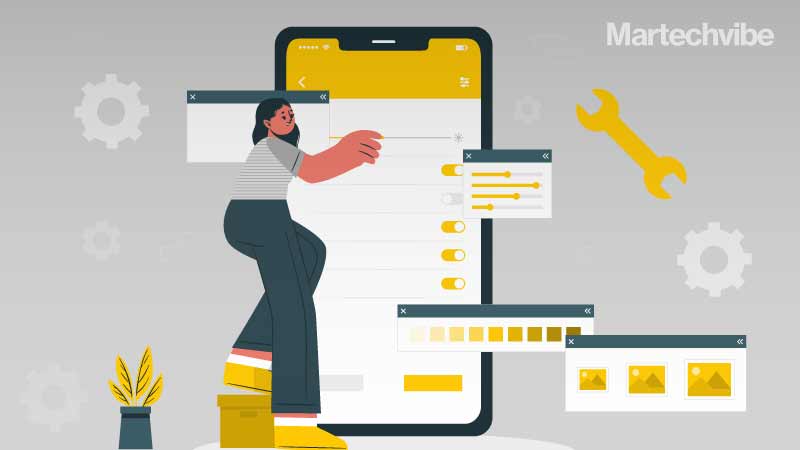Think More, Think Personal
Customisation was enough a while ago, but today it is mass personalisation that takes the cake Chandi. Janvi. Chandler (yes, really). How many different versions of your name have you had on your Starbucks cup? We’ve seen a million social media photos of cups with interesting handwriting and spelling errors that become running jokes among […]
Topics

Customisation was enough a while ago, but today it is mass personalisation that takes the cake
Chandi. Janvi. Chandler (yes, really). How many different versions of your name have you had on your Starbucks cup?
We’ve seen a million social media photos of cups with interesting handwriting and spelling errors that become running jokes among friends. Even love stories have blossomed out of them.
Starbucks didn’t start with a personalisation strategy in mind. It was a small campaign, “first name initiative”, that it started in 2012 to create a personal connection with customers. It worked like a charm for the global brand. Personalisation became a customer demand soon, and today mass personalisation is rightly the best business and marketing strategy.
In a highly competitive business ecosystem, customers are king and they want tailored content addressing their needs. Customisation was enough a while ago, but today it is mass personalisation that takes the cake. With the advancements in technology and data analytics, mass personalisation is possible and, most importantly, financially favourable.
Personalisation vs mass personalisation
Fundamentally, personalisation is about providing customers with the most relevant customisation of a brand product or service through insights gained from data and machine learning (ML) technology. While the concept aims to enhance CX, increase conversion rates, and demonstrate higher effectiveness of sales, it is not achievable at scale.
On the other hand, mass personalisation makes it possible. Ultimately, it is the same as the former, but can cover a company’s entire range of products and represent the overall approach of its business. Take for example, Netflix’s AI-based content matching algorithms and Amazon’s product offering algorithms. The success lies with the organisation’s ability to build and orchestrate data flows and leverage actionable insights for mass personalisation strategies.
It’s not easy for B2B companies
Creating highly-personalised digital experiences for specific audience groups usually consist of a segmentation model that helps brands divide their customer base for optimal targeting. However, for B2B companies, targeting individuals can be complicated. But identifying similarities and differences within the target audience can help create bespoke experiences.
Offering multiple services and products that span several industries, B2B companies need dynamic website personalisation in their strategy. Experts believe it will allow B2B brands to mould better working relationships, enhance customer experience (CX) and target decision-makers. For instance, Webco, a website personalisation software, allows brands to perform mass personalisation by creating bespoke experiences in real-time, along with the capability of segmentation by industry, sector, and the business.
For Marketing
Personalisation is an entire process that takes 60 per cent of the marketing process.
Marketers need access to accurate data using data analytics tools, and an effective personalisation operating model. Email Monday research reveals that 75 per cent of marketers are using automation tools in their strategy, and House of Marketing research stated that almost half of all marketers agree that automation is one of the four major methods for personalised experiences.
Traditionally, marketers considered their target audience as one mass group and delivered the same experience across the board. In the last few years, personalisation has rightfully taken over the throne for CX.
However, mass personalisation is not just about tailoring products and the messages to customers, it caters to one other important element of CX — trust. In the current business economy, building trust is vital for business success. How does one achieve that?
The Four Pillars
A Forrester Consulting survey indicated that several marketers who have poor identity reposition face problems such as knocking the doors of wrong customer groups, which means marketing budgets have been compromised and have become useless. And sometimes, the company ends up offering irrelevant products or services.
Mass personalisation insists on a strong identity foundation that can avert these possible issues, and offer a clearer perspective of its customer base at an individual level. Over time, the acquired consumer signals can be forged into effective marketing campaign statistics, and lead business success.
It’s unproductive and futile when consumers receive promotional offers or advertisements of a product they just purchased or a hotel they just booked. Experts strongly suggest ideation at scale to avoid marketing mishaps. Brands must indulge in massive sets of data assets, real-time operations, and recalibration of marketing messages based on consumer patterns. For all this dynamic creativity in work, ML algorithms and tools will eliminate data wastage and provide the C-suite with key insights for a seamless mass personalisation.
Most times marketers put their faith in action, but they fail to realise that brand success is grounded in successful outcomes. The action is always in the blueprint but focusing on outcomes requires activating the actionable messages across all channels with performance transparency at an individual level.
Mass personalisation of language
It’s a brand new day, and the same old routine – wake up, get fresh, and check your inbox while you eat. But this time, maybe you will be surprised by how marketing emails seem to speak your language, figuratively. A marketing mail that greets customers by name will not cut it anymore.
Algorithms deploy individualised phrases based on calculated insights about what emotional pleas could work its magic on a particular customer. Personalisation of language can create a better UX, especially with the increased use of AI in research and design.
Persado’s AI platform unlocks the hidden value of language. Experimenting with real-life applications, Persado’s AI is built on a foundation of computational linguistics, advanced data science, and natural language generation. Its ML model evaluates communication data at an individual level and generates content that will have the most impact on the particular user. It’s like your alarm clock knowing exactly what to tell you to get out of bed. It’s not a pipe dream anymore. The future technology can be powerful enough for mass personalisation of language at an unprecedented level.
Also Read: When AI Leads Personalisation
For Business Strategies
Step on a scale, then walk on a mat, and get yourself a 3D-printed sole, personalised at the most granular level.
ECCO, a renowned Danish shoe manufacturer, offers an advanced shoe personalisation experience for all customers through its QUANT-U service. Their scale is equipped with sensors for foot measurements, the mat measures pressure points and support points, and their learning-based algorithm processes the data points, and the sole is printed using a German RepRap machine and silicone, and is available for worldwide delivery.
While some brands have launched mass personalisation marketing initiatives, some have begun to offer mass personalisation with their products. Another example is Ultimate Ears that gets its user’s ear scanned by audiologists, and take a 3D print of the plug-in monitor headphones to perfectly fit the auditory canal.
Does it impact the supply chain?
While the strategy works with customers, it demands a lot more work from supply chains. With hundreds of possible variations, it can get chaotic with a traditional manufacturing process. On-demand manufacturing can sort the troubles.
Experts recommend flexible systems that are equipped to handle variations to help produce large volumes of individualised orders. Product delivery can also be complicated as mix ups are unaffordable. It is important for the supply chain to effectively collaborate with transportation services. Using transport technology that follows through until the last mile is vital. Supply chains must provide visibility and help with tracking information as customers also demand accurate estimated arrival dates and other updates.
The tech making it all possible
Mass personalisation requires an individual approach, and the technology leveraged by companies to make this happen depends on its industry, and business goals.
It does not require a martech stack transformation. In fact, you might already have all the right components, and it’s just about how you use it. And brands that succeed in utilising technology to elevate their product personalisation products are most likely to increase their sales and achieve higher levels of customer satisfaction.
Also Read: Using Personalisation in Marketing to Drive Growth and Revenue
Internet of Things (IoT)
IoT devices can help monitor and log in user behaviour inputs in real time. It can also send valuable data assets to the cloud for further processing. The company then analyses the data asset, and uses the insights to enhance customer strategies.
Cloud computing
With round-the-clock access to virtualised IT resources and a configurable infrastructure, personalisation can be exponentially increased to meet the changing program requirements. For a powerful product personalisation software, organisations can utilise CSP solutions and combine it with cloud development services.
Artificial intelligence and machine learning (AI and ML)
Through AI and big data, product personalisation software can maximise the use of detailed user logs. Additionally, AI-based systems can tap into data volumes to detect anomalies that can affect the behavioural pattern analyses.
Despite hoarding data and available technology, many marketers struggle with a holistic and clear understanding of their customers. With the dawn of crumbling cookies, it is going to get difficult for brands that depended on third party data for long. The only way to gain a holistic understanding of customers is to gather more information from trusted, protected and ethically sourced portals, and become creative with technology.
With over 80 per cent of the global consumer base demanding for personalisation, the reign of mass personalisation is inevitable.








































































































